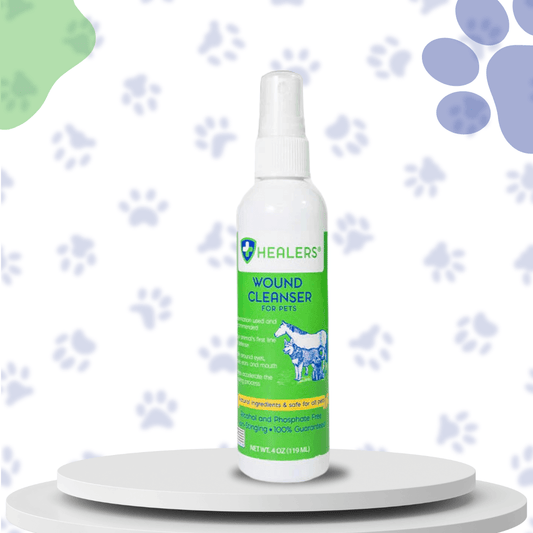7 Ways To Help Your Dog With Anxiety. Written
Share
Author: Ava Rowe
Anxiety is not just a health condition that affects humans, but even pets, including dogs. Your dog can become anxious due to various factors, such as separation from the owner and the conditions of the environment. Symptoms include biting and barking, among other unhealthy behaviors.
Spotting signs of anxiety in dogs is not enough. It’s crucial to have a proactive approach to calming them. From CBD oil to medications, there are different ways to potentially help in the treatment of anxiety. Read on, and we’ll share some of the best things to do.
1. Build a Safe Space
One of the main reasons why dogs feel anxious is their environment. Different external factors can affect their behavior, from noise to temperature. Hence, another potential way to calm your pet is to create a safe space that won’t contribute to stress.
A cozy crate can provide refuge to an anxious dog. Pick a crate spacious enough to accommodate the size of your dog. Putting a white noise machine can also help, which can muffle other sounds that could cause stress to your pet. Make it even more comfortable by adding a mattress and blanket with natural and relaxing scents.
Your dog might also do well in a windowless room. This is especially good for large dogs that won’t fit in a crate. Such a room can re-introduce your dog to being alone, away from things that could be causing stress.

Make your pet more comfortable in the room. For instance, you can have them wear a Healers Anxiety Wrap, which applies gentle and constant pressure to create a calming effect. A front body wrap gives a gentle hugging sensation to help your pup calm down. Healers wraps come in two types, the front and the other is a rear wrap, which not only helps ease anxiety but also offers therapeutic functions for dealing with incontinence or heat-cycle management. These wraps can be worn independently, or velcro together for full body coverage.
2. Use CBD Oil

Photo by Alex Navarro from Unsplash
While it may sound controversial, some pet owners are sharing how they successfully treated their dogs' anxiety with CBD oil. The evidence is mostly anecdotal. There is currently no scientific data proving this claim, but many say it can be an effective solution.
To help calm dogs with CBD oil, one of the most important is to choose a high-quality product. Buy only from reputable sellers. When in doubt, the best thing to do is to ask a veterinarian. Check your state laws, it can be legal to prescribe CBD not just for humans but even for dogs who require medical attention. Pay attention as well to the proper dosing that the vet will suggest.
Watch out for potential side effects of using CBD in dogs, including dry mouth, low blood pressure, and drowsiness. If in doubt, call your veterinarian.
1. Consider Medications
For moderate to severe cases of anxiety, medications can be promising. However, take note that the results are not immediate. It can take several weeks before the effects can be fully evident. In most cases, you’ll also need to combine it with other approaches, such as behavior modification training.
Among others, one of the most popular medications for treating dog anxiety is alprazolam. It’s commonly prescribed to treat dogs who have situational anxiety, such as when there are thunderstorms. In addition, it is often given to dogs who exhibit fear and panic during veterinary examinations.
Amitriptyline is another common medication. It’s an antidepressant that is used for the treatment of generalized and separation anxiety. It is administered as a tablet through the mouth, which can be given with or without food.
Other medicines given to dogs with anxiety include buspirone, clomipramine, dexmedetomidine, diazepam, fluoxetine, lorazepam, paroxetine, and sertraline.
As with all medications, give under the advisement of your veterinarian. And remember, it is NEVER okay to give your pet medications prescribed for a human, even if it is the same type of medication. Doses are very different!
2. Exercise
An active lifestyle can reduce the fearfulness of dogs. It is especially recommended for dogs who are suffering from separation anxiety. While the best solution is never to leave the dog alone, such may not always be possible. So, consider a regular exercise routine to reduce anxiety potentially.
One of the effects of dog anxiety is excess energy. It would help to find an activity where dogs can use this energy. Take them out to the park and play ball with them. More so, like in the case of humans, exercise can produce endorphins in dogs, which might also help minimize anxiety. Plus, it can decrease negative behaviors linked to anxiety, such as chewing.
3. Massage
Like humans, massage can be relaxing for dogs. Start with less intense massages, which are gentle on your dog. Keep your strokes short and slow. The ear, thigh, glute, head, and back are some of the body parts you should massage. Watch how your dog reacts to the massage. Stop if it’s making them more anxious.
Dogs with anxiety often end up with muscle tension. To alleviate this tension, a massage can be promising. It relaxes their body and mind. Consequently, it might make them less anxious.
One study asserts that massage positively impacts the quality of life of dogs. It reduces pain severity. As such, it can be helpful in situations wherein the cause of anxiety in dogs is pain.
4. Give Them Something to Chew
When your dog starts exhibiting signs of anxiety, giving something to chew can help. It eases the stress they feel from the surroundings, such as being with new people or in a new home.
Most people will give toys for dogs to chew. However, one thing you can do is give them something more helpful. For instance, ginger can be great, relieving an upset tummy, which can happen when the dog is anxious. You can also give them something with chamomile to relax.
5. Behavior Modification
One technique that might help calm anxious dogs is counterconditioning. In this case, you’ll teach dogs something positive about the things that trigger anxiety. For instance, if they become anxious whenever they see another dog, teach them to sit and give a treat.. This way, when they see another dog, they could see it as a sign that they will receive a treat.
Another approach to behavior modification is desensitization. It’s all about exposure to a stimulus that could trigger an undesirable behavior, such as anxiety. However, the situation in which you must expose them should be at a lower intensity.
Conclusion
Do not panic when your dog becomes anxious. Consider possible solutions to calm your pet, including those mentioned above. If you’re unsure what to do, it is best to consult a vet to seek professional help.





1 comment
Thanks for Sharing. This Blog is very informative and useful for others.